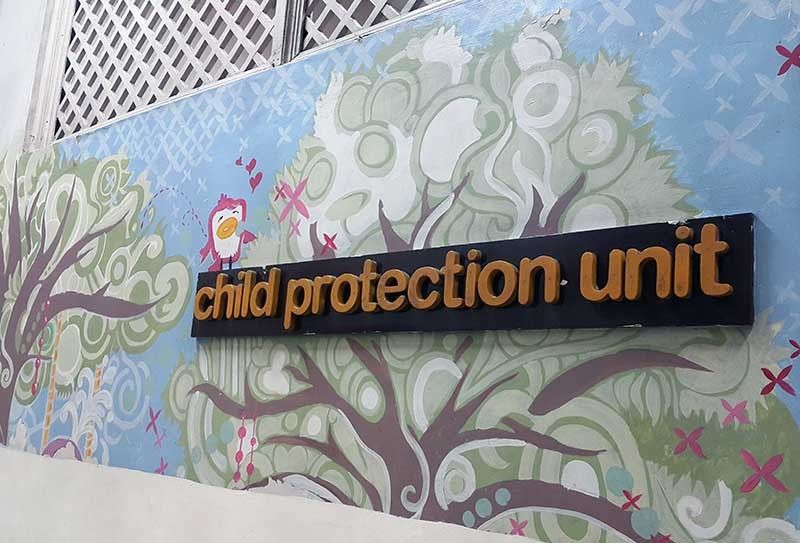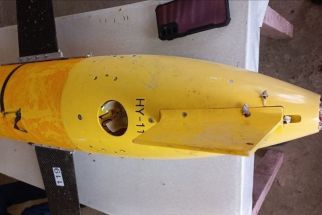Despite DOH order, most gov't hospitals lack children protection units

(Second of two parts; read part one here.)
MANILA, Philippines — There are 94 Women and Children Protection Units and Violence Against Women and Children Desks spread across the country, according to the Department of Health website.
The current number is a vast improvement from the 38 working WCPUs in 25 provinces in 2011, but still short of covering all government hospitals.
In 1997, the government promulgated Administrative Order 1-B, providing for the establishment of a Women and Children Protection Unit in all DOH hospitals. In 2013, the DOH issued another order to strengthen the implementation of the program.
According to the order, hospitals must include in their budget proposals the funds needed to support the operations of their own WCPU.
Out of 721 public hospitals, 70 are managed by the DOH while the rest are managed by LGUs and other national government agencies.
“As always, it’s about political will. There are enough laws and the DOH order is there on establishing WCPUs in all government hospitals,” says Dr. Bernadette Madrid, executive director of the Child Protection Network and a staunch advocate of child protection.
Of the 94 WCPUs and VAWC Desks, only CPU-PGH is considered a Level 3 type of WCPU in the National Capital Region. The three others are in Baguio, Cebu, and Davao, shares Madrid. This implies that only four CPUs across the country have a dedicated mental health professional handling child abuse cases.
“There is no limit to the number of Level 3 CPUs. It's up to the hospital if they want to have a Level 3 but it needs manpower and budget,” she says.
According to the DOH, a WCPU can be considered Level 3 if it is equipped with at least two physicians, at least two social workers, a registered nurse, a police officer, and a mental health professional—all of whom trained, mostly by CPN, to handle child abuse cases. The minimum staff necessary for a functioning WCPU, or what would be considered a Level 1 WCPU, includes a trained physician and a social worker.
Child Protection Unit at PGH
The CPU-PGH—established in 1997 and has since treated over 20,000 children—serves as a dedicated emergency room and clinic for abused children.
In 2017, the CPU-PGH handled about 1,400 cases of child abuse. The figure has remained consistent in the last five years, averaging 1,428 cases each year. When the CPU-PGH was first established in 1997, it handled 374 cases that year.
The unit gets funding from the CPN, which in turn gets funding from private donors and fundraising events.
The CPN is part of the Council for the Welfare of Children, along with the DOH and the Department of Social Welfare and Development. The CWC is the government’s inter-agency body mandated to coordinate the implementation of laws and to formulate programs and strategies for the protection of children.
Macababbad explains that expenses, such as the salaries and upkeep of the CPU, are covered by the CPN, while the physical space and electricity are shouldered by the PGH.
But despite the long waiting list and the oft-overworked staff, “CPU-PGH is the ideal,” says Neri, who also heads the CPU at the Philippine Children’s Medical Center in Quezon City.
Need for full-time social workers
Across the emergency room of the PCMC, the door of the CPU remains shut on most days. Lights are turned off and one would think that the office had long been forgotten—a stark contrast to the two-level CPU-PGH with brightly painted walls filled with social workers, doctors, psychologists, and psychiatrists attending to patients.
While the CPU-PGH has a separate playroom, at PCMC a doll and few stuffed animals sit atop steel filing cabinets across the doctor’s consultation desk and an examination table. Upon entering the small room is a desk that would have been occupied if it had a full-time social worker on duty.
“Yung social worker,” Neri says, “ang tagal-tagal kong ni-lobby yan (The social worker, I lobbied for that for a long, long time).”
The full-time social worker will not only be able to man the CPU, but will also allow them to do home visits.
“Poor kami sa follow-up. May pumunta sa aming pasyente ngayon, hindi na namin alam kung ano na nangyayari, kasi nga, hindi kayang i-follow up ng social worker namin kasi nga hindi full-time (We are poor in follow-up. There is a patient who went to us today, we don't even know what's happening because the social worker can't do the follow up since she's not full-time),” Neri adds.
Neri herself cannot stay at the CPU office because she divides her time between PGH and PCMC, where she holds her private clinic and does most of the work for the CPU.
The CPU at the PCMC is considered as Level 1, which means it operates with the minimum staff required by the DOH. There is no dedicated psychiatrist assigned to the CPU, and abused children are scheduled along with non-CPU patients of PCMC.
One-stop shop
Barlaan likes to think of the CPU-PGH as a “one-stop shop” because aside from the medical attention, the child and other witnesses can also make a sworn statement since there is a police officer assigned to the CPU or even file a case with the help of the CPU-PGH’s legal team.
But this also means that psychologists can be asked to sometimes appear in court proceedings to give expert testimony.
Barlaan explains that this should be the work of forensic psychologists, who focus on the details of the event to explain at which point did the trauma occur, among other things. Psychologists handling the child’s therapy, on the other hand, don’t need to investigate those details, and should instead help the child “deal with the aftermath.”
Ideally, there should not be dual roles, he laments. “Pero sa Pilipinas, nangyayari yun… Kasi nga, may kakulangan tayo sa mental health professionals (But in the Philippines, that happens...because we lack mental health professionals).”
At PCMC, psychiatrists avoid court appearances altogether, because they are already overstretched and going to court to give expert testimony takes time away from their duties, says Neri.
Sadly, this is also one of the reasons why abused children sometimes don't come back for their appointments.
“Kaya sila magpapa-psych kase ni-refer, kailangan sa kaso. Yun ang di kayang i-provide ng psych namin dito (They go for psych [tests] because [they've been] referred, [it's] needed in the case. That's what our psych here can't provide),” Neri says, “kaya nawawala itong mga pasyenteng ito (that's why we lose these patients).”
CPN’s Madrid says there are plans to add more psychologists and psychiatrists to CPU-PGH, but government must ultimately take the lead in providing mental health services in public hospitals.
She adds that the mental health law, which was passed in June, should be able to address the supply of mental health providers.
(Marishka M. Cabrera is a writer and editor of Inc. Southeast Asia, a media brand for start-ups and entrepreneurs in the region. She is taking her MA in Journalism at the Ateneo de Manila University under the Adenauer Fellowship for Media & Communication in Asia.)
(VERA Files is put out by veteran journalists taking a deeper look at current issues. Vera is Latin for “true.”)
- Latest
- Trending






























